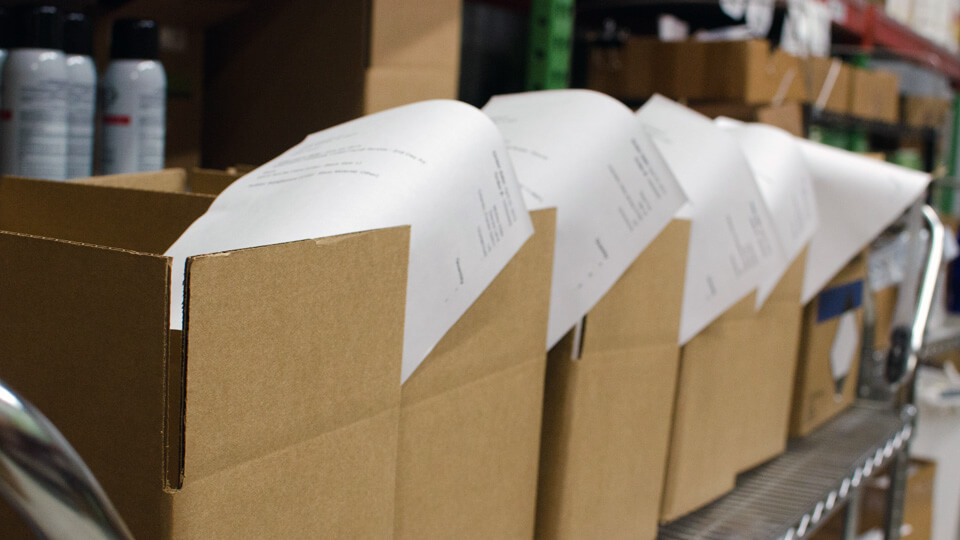
Fulfilling ecommerce orders has never been a more demanding task. Not only are there more shoppers ordering online than ever, but buyers have come to expand faster and cheaper shipping over time. Orders must be shipped as soon after they were placed as humanly possible in order to satisfy your customers and keep them coming back for more.
The problem is that your day-to-day focus isn’t on getting your orders out the door — at least, it shouldn’t be. Fast-growing brands can’t afford to spend all of their available hours on shipping orders. You need to be working on growing your business, not just satisfying existing sales. So how can you automate the work that goes into daily order fulfillment?
The simple answer is to mimic what’s already being automated in your operation. Let’s take payment processing as an example: the whole pipeline of card verification, charging, address validation, and customer notification is (most likely) handled by your shopping cart or marketplace. This is an incredibly valuable innovation we’ve enjoyed over the last few years, and it’s made possible by a few simple tenants of automation: memorization, automation, and calculation. Let’s apply those same concepts to automating your order fulfillment decisions.
Memorizing order fulfillment data as you ship
A huge priority in automation is either the elimination or simplification of repetitive tasks. In the case of order packing and shipping, one of the most time-consuming tasks is also the most repetitive: weighing and measuring each order after they’ve been packed.
While some brands can get by using flat-rate shipping methods or ship items by themselves (so no measuring or weighing is needed if the item’s packaged size is already known), most warehouses still need to break out the tape and scale to ensure that they’re not over- or under-paying for postage. The adoption of dimensional-weight rate tables have added even more weight (no pun intended) to the necessity of using accurate weight and dimension values when getting shipping rates and printing shipping labels.
As annoying as all that sounds, you aren’t necessarily doomed to repeating the task of weighing and measuring every package that goes out the door. With a system that’s aware of each shipment’s contents, a database could be built that memorizes the weights and dimensions used to ship each combination of items that your team packs. This memorization system would build up over time and will soon be able to predict exactly what a packed order’s size and weight before it even touches the scale. After all, the items in one order didn’t get any bigger or heavier when they were packed for a later order.
Letting the math do the work
The “traditional” way to select a shipping method for an order is usually to rate-check it with your preferred carriers and shipping services. This means that once the order has been packed, weighed, and measured, it’s time to check your rate tables or online systems to see what it’ll cost to ship the order via the available shipping methods.
The problem with this type of work is that, while it _feels_ like dynamic decision-making at the time, you’re generally making the same decision every time: once you know what each valid method costs, you’re going to choose the method that will get the order to the customer in time for the least amount of money.
Newer solutions that have access to multi-carrier rates can make that same judgement call for you. As long as the system is aware of where the shipment is going, when it needs to be delivered by, and the estimated transit time for each service, it can then narrow down which services are acceptable for the shipment. From there, it’s just a matter of choosing the cheapest method from that filtered list.
Shipping automation that follows the rules
In the above section, we talked about how easy it can be to let a computer choose the cheapest rate among a list of valid services. But what if your orders can’t always be shipped by any method available? When special considerations must be made, it’s tempting to revert to manual decision making. Fortunately, even those daunting situational decisions can be automated with the right set of rules.
Most logical decision making that occurs during a production cycle (or in this case, a fulfillment cycle) can be broken down to conditions and parameters that can be enforced by a series of rules. The “if this is true, then do this” rule structure is used in software engineering, robotics, and even aerospace, but it fits just as well in your warehouse.
As an example, let’s pretend that one category of products you sell can only be shipped via a certain shipping method. Even if you inform your team of this, they may still accidentally ship orders containing those restricted products via another service. It’s easy to blame human error or be tempted to take control of that step yourself, but try first to break the problem down into a rule that a software system can follow. That rule might read out like this: “If an order contains items with Tag A, ship it via Method B.” Then all you have to do is ensure the appropriate items are tagged and that those tags are visible to the system that’s choosing shipping methods for each of your orders.
With SKULabs, your inventory management and order fulfillment all takes place in one system. That means the system is aware of not just the orders you’re shipping but the items that are in the orders as well. This presents a unique opportunity to memorize package info for items that have been shipped before, select from real-time shipping rates when only the cheapest option is needed, and enforce rules based on item and order criteria when more specific decisions need to be made.


